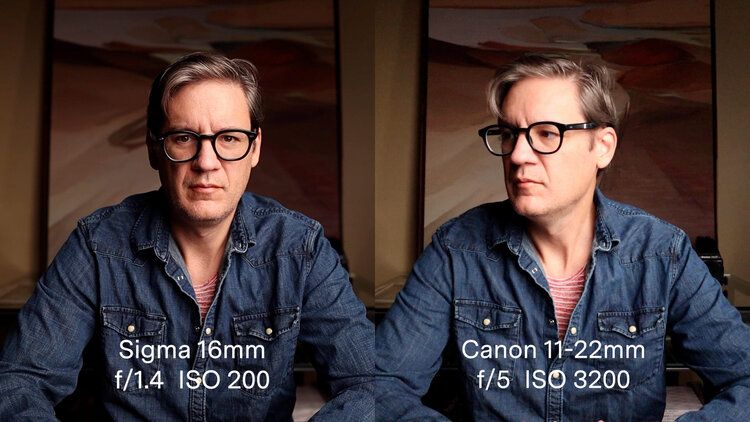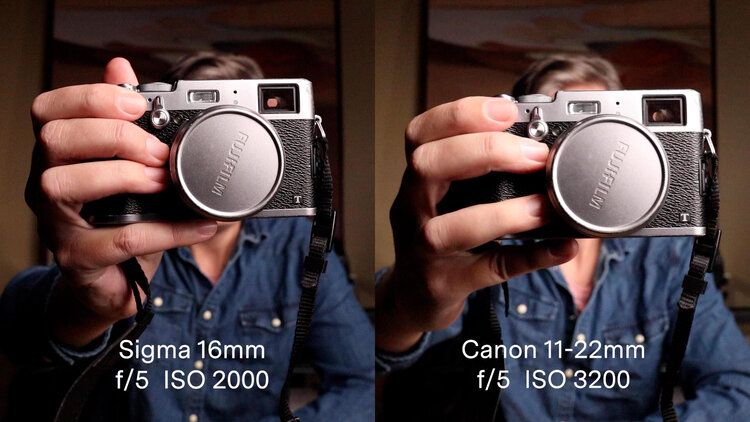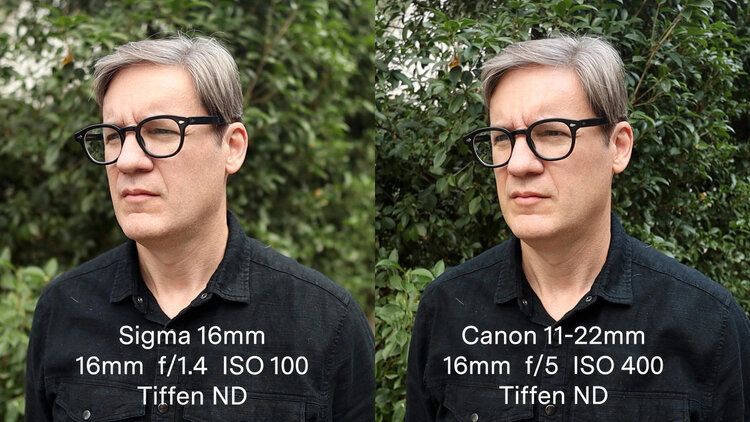Sigma 16mm f/1.4 EF-M Lens: Review

For about a year now, I’ve been filming all my travel vlog content using a Canon M50 with a Canon 11-22mm EF-M variable zoom lens. As much as I like the 11-22mm, I’ve unfortunately been bitten more than once by its small f/4-5.6 aperture. Not a problem when shooting video outdoors in plenty of light, but in low light, I’ve had to raise the M50’s ISO super high to compensate which causes footage to lose sharpness and display noise.
So when Sigma announced a new 16mm prime EF-M lens with a large f/1.4 aperture, I jumped at the chance to review it. Is it worth buying? Read on to find out.
Sigma 16mm f/1.4 EF-M
The Sigma 16mm f/1.4 lens is one of three new EF-M prime lenses now being offered by Sigma (including a 30mm lens I reviewed here). For Canon users looking for EF-M lens options, the Sigma lenses couldn’t come at a better time, because Canon—for whatever reason—has never expanded their EF-M lens lineup with anywhere near the breadth of their full-frame EF lens options.
For many, the Sigma 16mm should fill a huge need for filmmakers and photographers looking for a relatively affordable, high-quality, semi wide-angle prime lens for their Canon EF-M cameras. But let’s take a closer look at the Sigma 16mm compared to the Canon 11-22mm to see how it performs.
Low-light performance

I ran the Sigma 16mm and the Canon 11-22mm lens through a low-light test to see their relative ISO performance. I set the Canon M50 to Auto ISO, then slowly opened-up the aperture. By the time I reached the Sigma’s maximum aperture of f/1.4, ISO had dropped all the way down to 200 — far lower than what the Canon 11-22mm could ever dream of achieving. The result? Far less noise, soft depth of field, and a surprisingly sharp image with superb highlight roll-off and color.
Autofocus performance

Thanks to the M50’s exceptional Dual Pixel Auto Focus mode, focus speed and accuracy was exactly the same between the two lenses. I thought that the Canon might have a slight edge over the Sigma (because third party lenses sometimes don’t perform as well), but thankfully that wasn’t a problem.
Depth-of-field

That large f/1.4 aperture on the Sigma 16mm EF-M isn’t just good for low-light shooting, but for giving your photos and videos a more dramatic look with beautiful background bokeh. To test this, I shot video on an overcast day with both lenses on the Canon M50, plus a Tiffen variable neutral density filter (which is needed when shooting video at 1/50 24fps). Even with the ND filter, the Sigma 16mm was able to maintain ISO 100 at f/1.4, while the 11-22mm had to raise its ISO to 400 to match exposure.
The result? Creamy backgrounds on the Sigma which give the image an almost three-dimensional quality by pulling the subject forward and receding the background. The Canon 11-22mm’s maximum aperture of f/5 (at 16mm) had the opposite effect — bringing the background into the same depth of field as the subject for an image that didn’t look as cinematic.
Image stabilization

The Canon 11-22mm has it, the Sigma 16mm does not. But does it matter?
To test this out, I mounted the Canon M50 on a monopod and took a walk. The Canon M50 has digital image stabilization, so I was curious to see if there was any difference using a lens (like the 11-22mm) that has internal stabilization versus a lens without it. To test, I turned Digital IS on and off for both lenses and shot comparison footage to see how they compare.
The result? As expected, Digital IS does make a difference with both lenses. I wouldn’t shoot handheld on the Canon M50 without it.
But what the Canon 11-22mm’s Image Stabilization? Does it produce better footage than the Sigma 16mm which does not have IS?
Nope. In my tests, the lack of image stabilization on the Sigma didn’t make any difference. The Canon 11-22mm performed just as poorly as the Sigma with Digital IS on the M50 disabled.
From my perspective, having Image Stabilization on the lens doesn’t make that much of a difference when shooting video on the M50.
Final Thoughts
Overall, the Sigma 16mm EF-M is a fantastic purchase for the Canon M50. The lens truly shines when opened all the way up to its maximum aperture of f/1.4, both in low-light environments and when filming outdoors with a neutral density filter. The lens doesn’t get quite as wide as the 11-22mm and is a bit tighter than I’d like for hand-held vlogging style shots, but image quality and performance of the lens wins out in the end. If I could go back and revisit my purchase of the M50, I’d buy just the body and pick up the Sigma instead of using the 11-22mm or the kit lens.



